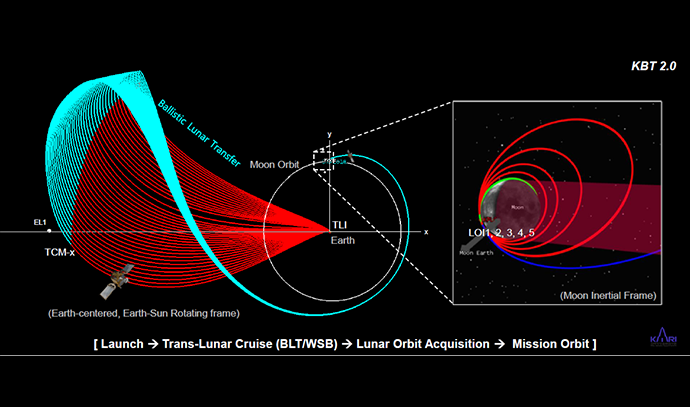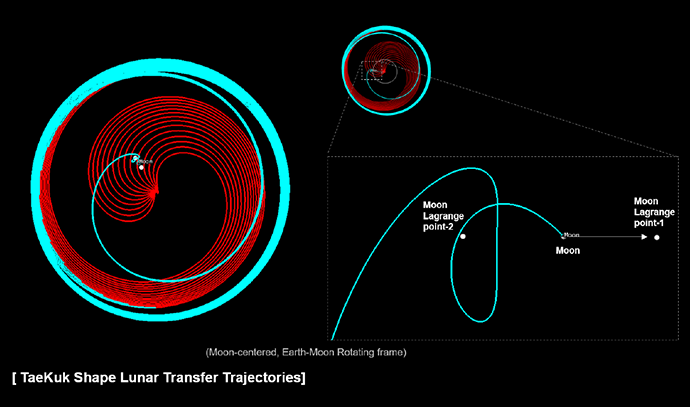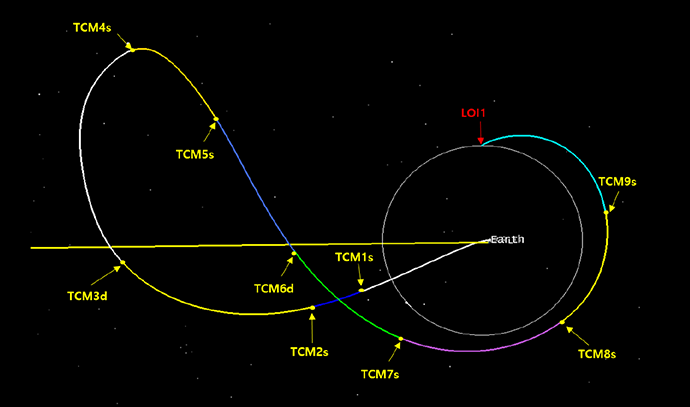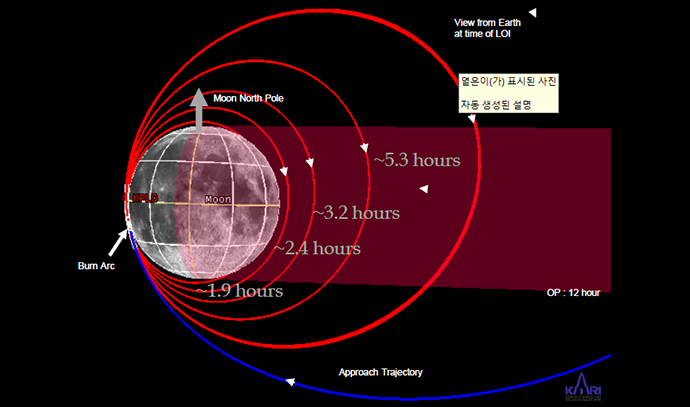

Going to the Moon with BLT/WSB method
The orbit for going to the Moon broadly consists of Direct Transfer, 3.5 Phasing Loop Transfer, BLT (Ballastic Lunar Transfer), etc. The Direct Transfer method previously used by the Apollo program requires time within about 5 days. It directly arrives on the Moon after its launch from Earth. The 3.5 Phasing Loop Transfer used by India’s Chandrayaan program is a method of entering lunar orbit after revolving several times around the Earth in a long elliptical orbit. BLT/WSB method entails flying to the L1 Lagrangian point between the Earth and Sun, which was designed to minimize the space probe’s fuel consumption.
After launch, KPLO was separated from the launch vehicle after entering the Transfer Orbit, an elliptical orbit. Subsequently, after making the solar panels face the Sun, the solar panels were fully deployed by automation. Then, the process of raising its orbit by liquid apogee engine (LAE) firing occurred in order to enter the drift orbit from transfer orbit. Once the satellite got into position, the engine fires a total of 5 times and ascends into a circular orbit (drift orbit) from an elliptical one. And then, by using orbit information and the satellite-installed star sensor, it acquired its position facing the Earth, and finally reaches satellite mission altitude.
A method devised to minimize the fuel consumption of a probe with an orbit that can reduce speed increments (ΔV) by about 25% when the Moon is captured by increasing orbital energy, even though TLI maneuver (provided by launch vehicle) is generally excellent by flying up to L1 Lagrangian point (approx. 1.5 million km) between the Earth and Sun.
After its launch on August 5, 2022, Danuri traveled a total of 5.94 million kilometers along an Earth-to-Moon transfer trajectory before arriving at the Moon on December 17.
It then performed three lunar orbit insertion (LOI) maneuvers on December 17, 21, and 26, successfully entering its target mission orbit. Danuri is now completing a lunar orbit approximately every two hours.
Danuri reached the Moon not via a direct path but using a low-energy ballistic lunar transfer (BLT) trajectory. This trajectory takes advantage of the gravitational forces of celestial bodies, such as the Sun, Earth, and Moon, to reduce propulsion requirements.
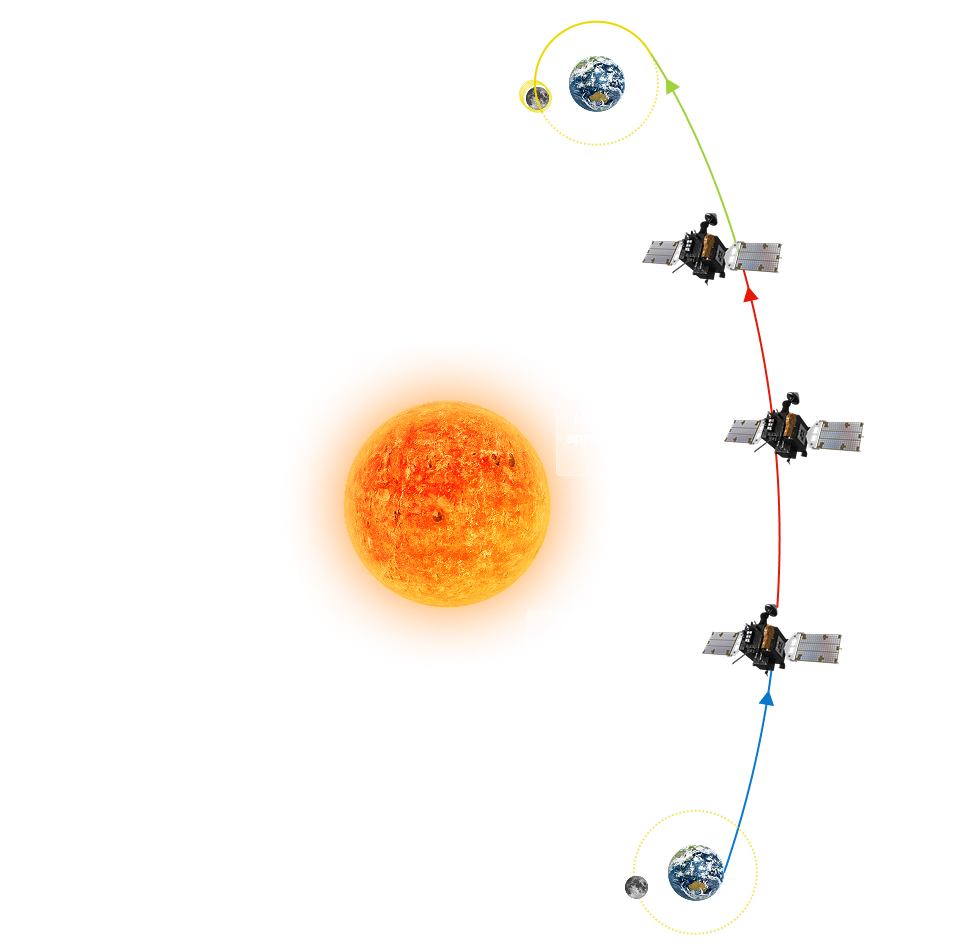
<Sun-Fixed Reference Frame>
